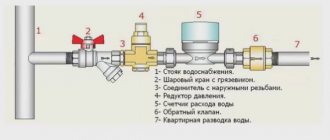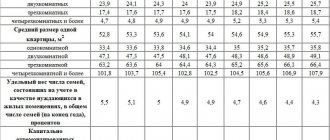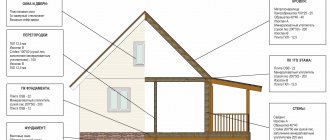The annual rise in price of resources forces the end consumer to think not only about their savings, but also about the quality of the utility services provided. One of the most significant expense items in paying for an apartment is heating, so consumers monitor its parameters especially carefully. To do this, it is worth finding out what the normal temperature of the batteries in the apartment is in 2020.
Legislation
- Federal Law No. 190-FZ dated July 27, 2010 “On Heat Supply” regulates relations in the field of heating residential buildings.
- Federal Law of December 7, 2011 No. 416-FZ “On Water Supply and Sanitation” in Article 7 of Chapter 3 contains general rules for heat supply of apartment buildings.
- Decree of the Government of the Russian Federation dated May 6, 2011 No. 354 “On the provision of utility services to owners and users of residential premises in apartment buildings” in Appendix 1 establishes requirements for the quality of heat provision (permissible breaks, conditions and procedure for changing fees, air temperature standards).
- GOST R 51617-2000 “Housing and communal services. General technical conditions" regulates the provision of standard levels of air heat.
- SP 60.13330 SNiP 41-01-2003 “Heating, ventilation and air conditioning”.
Heating radiator temperature: how to sue for cold in an apartment?
13.09.2019
Heat / Radiators
Problems with heating during the heating season and cold in the apartment can be a reason for going to court. By law, batteries must warm the room no lower than the temperature established by special standards.
What should be the temperature in the apartment? Legal requirements
The temperature in the residential premises of an apartment building is determined by the “Rules for the provision of utility services to owners and users of premises in apartment buildings and residential buildings”, as well as “GOST R 51617-2000. State standard of the Russian Federation. Housing and communal services. General technical conditions."
The “Rules for the Provision of Utilities” states that in residential premises the temperature should not be lower than +18 °C (in corner rooms - +20 °C). And in areas with the coldest five-day temperature of -31 °C and below, the air temperature in residential premises should not be lower than +20 °C (in corner rooms - +22 °C).
At night (from 00.00 to 5.00 hours) the air temperature in the apartment can drop by no more than 4 °C. During the daytime, a decrease in temperature below the standard level is not allowed.
At the same time, GOST R 51617-2000 (State Standard of the Russian Federation. Housing and communal services. General technical conditions. approved by Resolution of the State Standard of Russia dated June 19, 2000 N 158-st) sets the minimum air temperature level for certain types of premises in the apartment .
| Room | Indoor air temperature during the cold season, °C |
| Living room of an apartment or dormitory | 18 (20) |
| The same, in areas with the coldest five-day temperature (probability 0.92) minus 31 °C and below | 20 (22) |
| Apartment and dormitory kitchen, vat: | 18 |
| Drying cabinet for clothes and shoes in the apartment | – |
| Bathroom | 25 |
| Individual restroom | 18 |
| Combined toilet and bathroom area | 25 |
| The same, with individual heating | 18 |
| Common washroom | 18 |
| Shared shower | 25 |
| Shared restroom | 16 |
| Dressing room for cleaning and ironing clothes, washroom in the dormitory | 18 |
| Lobby, common corridor, hallway in an apartment building, staircase | 16 |
| Lobby, common corridor, staircase in the dormitory | 18 |
| Laundry room | 15 |
| Ironing and drying rooms in dormitories | 15 |
| Storage rooms for storing personal belongings and sports equipment; household and linen in the hostel | 12 |
| Isolation room in a dormitory | 20 |
| Elevator machine room | 5 |
| Garbage collection chamber | 5 |
Notes: In the corner rooms of apartments and dormitories, the air temperature should be 2 °C higher than specified
How to correctly measure the air temperature in your apartment?
The current “Rules for the provision of public services” explain the situation as follows:
... The air temperature in residential premises is measured in a room (if there are several rooms - in the largest living room), in the center of planes spaced from the inner surface of the outer wall and the heating element by 0.5 m and in the center of the room (the point of intersection of the diagonal room lines) at a height of 1 m. In this case, measuring instruments must comply with the requirements of standards (GOST 30494-96)…
What to do if the temperature in your apartment drops below normal?
If you find that your apartment is colder than required by law, you must notify your emergency dispatch service. The application can be made either in writing or orally (by telephone call).
The duty officer is required to register your application and set a time for the inspection.
The time for the inspection is set no later than 2 hours from the moment of receiving a message from the consumer about a violation of the quality of the utility service, unless a different time is agreed upon with the consumer.
Upon completion of the inspection, an inspection report is drawn up.
If during its course a violation of the quality of a utility service is established, then the inspection report indicates the date and time of the inspection, the identified violations of the quality parameters of the utility service, the methods (tools) used during the inspection to identify such violations, conclusions about the date and time of the beginning of the violation of the quality of the utility service. services.
It’s cold in the apartment: what compensation can you expect?
If no one comes to you, or comes and signs documents, but nothing changes, then you have a natural desire to influence the situation in more radical ways.
Before moving on to considering possible methods of influencing public utilities, let's clarify what responsibilities the current legislation places on the heat supplier to a residential building.
The requirements for an acceptable interruption in the supply of heat are formulated as follows (for more details, see the Rules for the provision of utility services to owners and users of premises in apartment buildings and residential buildings, Appendix 1, Section VI):
- no more than 24 hours (in total) within 1 month;
- no more than 16 hours at a time - at an air temperature in residential premises from +12°C to the standard temperature indicated in the table above;
- no more than 8 hours at a time - at an air temperature in residential premises from +10°C to +12°C;
- no more than 4 hours at a time - at an air temperature in residential premises from +8°С to +10°С
The liability of utility companies for violations of these requirements is established as follows:
- for each hour of exceeding the permissible duration of a heating interruption, calculated in total for the billing period in which the specified excess occurred, the amount of payment for utility services for such billing period is reduced by 0.15% of the fee determined for such billing period.
Well, what if heat is supplied to the apartment, but the radiators do not warm the room? In this case, the following requirements are established:
- permissible decrease in standard temperature at night (from 0.00 to 5.00 hours) - no more than 3°C from the above level;
- a decrease in air temperature in a living room during the daytime (from 5.00 to 0.00 hours) is not allowed
Responsibility for violation of these norms is established as follows:
- for each hour of deviation in air temperature in a residential area in total during the billing period in which the specified deviation occurred, the amount of payment for utility services for such billing period is reduced by 0.15% of the fee determined for such billing period for each degree of temperature deviation.
Thus, the current legislation makes it possible:
- In the event of your batteries being disconnected, for every hour in excess of the permitted duration of battery disconnection (the terms are indicated above), you will be charged 0.15% of the monthly (this is how we set the billing period) payment for heat
- If the apartment is cold, but the radiators still heat, then you can demand a reduction in the monthly heating fee by 0.15% for each hour when the temperature was below the standard.
The recalculation may be for a significant amount. Let's do the math.
Suppose you pay about 3,000 rubles a month in winter for heating your apartment. You are tired of constantly freezing and, say, on December 3, you drew up an act stating that the temperature in your apartment does not exceed 15 degrees Celsius (determined based on the temperature in the largest room by area).
However, within a month there was no reaction from the utility workers. It's still cold in the house. What will the recalculation be like?
We take 27 days following the drawing up of the act. This will be 648 hours. We multiply this number of hours by 0.15%, we get a figure of 97.2%. You should be recalculated for this amount. It turns out that you are actually not obligated to pay for heating if this service is not provided efficiently.
Naturally, no one will return this money to you voluntarily. We need to go to court.
What are the chances of winning a lawsuit regarding cold radiators in an apartment?
There are precedents for residents being able to get their heating bills recalculated due to the cold in their apartment.
In particular, in 2014, in several courts, a resident of the Perm Territory managed to obtain a recovery of 136 thousand rubles in favor of low temperature in her living room.
As Rossiyskaya Gazeta reports, Gubakha resident Natalya Alekseeva (surname changed) filed a lawsuit against the local management company in the spring of 2014, demanding 350 thousand rubles from utility workers.
She justified her statement by the fact that during the heating season of 2012-2013, as well as in the winter of the following year, the temperature in her apartment did not rise above 15 degrees.
Meanwhile, according to the rules for the provision of public services, the air in residential premises must be heated to 18 degrees, and in corner rooms - to 20.
Alekseeva invited employees of the Criminal Code to take her temperature. In total, such measurements were made ten times. And not once did they meet the norm. The plaintiff even noted in her statement to the court that because of the cold in the apartment she became ill, and listed several diseases that brought her to the hospital.
Alekseeva did not stop complaining to various authorities, district and regional, trying to get a recalculation of utility bills.
And in 2013, she even refused to pay for heating, believing that the money was being taken from her unreasonably. The case then reached the magistrate’s court, which issued an order to collect 31 thousand rubles in debt from Alekseeva.
But this decision was overturned, since she was able to prove the improper provision of a service such as heating.
As a result, all attempts to solve the problem peacefully failed. Claims asking for a recalculation of heat payments were rejected. The woman was not offered any compensation. And then she went to court.
During the trial, representatives of the management company completely denied their involvement in the low temperatures in Alekseeva’s apartment. They stated that there was no agreement between them for the provision of such a service as heating, and money for it did not arrive at their cash desk. Therefore, they did not recognize the demands presented.
However, the Gubakhinsky City Court decided otherwise. The fact is that, according to the management agreement for the apartment building where Alekseeva lives, the management company is obliged to provide water supply, sanitation and heating services. According to the same document, payment for them must be made directly to resource supply organizations.
The management company also has an agreement with the local housing and communal services department on the supply of thermal energy. It states that this resource is intended for heating residential buildings, and the air temperature in them must meet the standards.
Therefore, the court recognized Alekseeva’s demands as legal, and all the objections of the Criminal Code as unfounded. The absence of a heating agreement between them does not play any role, since this obligation of the utility organization is specified in the agreement for the management of an apartment building.
Taking into account that the management company could no longer argue the fact of poor-quality heat supply, the court satisfied the plaintiff’s demands to recover money. At the same time, Alekseeva is required to return 77 thousand rubles as a recalculation, in addition, a fine of half this amount and 20 thousand rubles as compensation for moral damage. Total 136 thousand.
Source: https://energovopros.ru/issledovania/2337/2384/19541/
When heat depends on batteries
The heat supply is regulated by Decree of the Government of the Russian Federation No. 354 of May 6, 2011. According to this document, the start and end of heating is tied to the ambient temperature. The central heating radiators are turned on when the daily average drops 8 degrees above zero and lasts for five days. On the main territory of Russia this occurs by mid-October.
Battery under the window
Water leaves radiators when the average outdoor temperature reaches +8 degrees Celsius. And it remains so for five days. Battery shutdown times vary according to regulations.
In warm years this occurs at the end of April.
If the temperature is low, then according to the standards, heating of residential and industrial premises is maintained until mid-May. Only during this period of time should we talk about temperature standards for water in radiators. The rest of the time, fighting the cold is the job of the residents.
At what temperature do you turn on the heating?
If you have centralized heating, then wait until the average air temperature outside is less than minus 8 degrees. within 5 days. Turning off the heating is done in the reverse order - above 8 degrees for 5 days.
Allowable interruptions in the coolant supply are shown in the table:
| Feed failure interval (max) | Room temperature |
| 24 hours | Minimum 12 C° |
| 8 ocloc'k | 10-12 C° |
| 4 hours | 8 or less C° |
If the resource supply company did not turn on the coolant supply at the specified temperature conditions or the failure in the coolant supply exceeded the permissible intervals, then you can complain all the way to the prosecutor’s office. They will turn on the heat for you before the test is completed, but this way you will protect yourself from the cold in the future.
We invite you to familiarize yourself with Electric water heaters for summer cottages: how to choose, liquid and instantaneous, prices
Normal water temperature
It was once believed that water for central heating should be heated to 100 degrees on the outlet and 60 degrees on the return flow. At that time there was no good equipment to control the heating of water for central heating. This approach is not cost effective. Rising fuel costs increase utility bills for homeowners.
Standard radiators
Modern equipment allows the use of low-temperature heating of apartments according to standards. This means that the water temperature standards in heating radiators are not constant. They become attached to external factors. The following are taken into account:
- Heat loss from buildings. It is theoretically possible to build a house without heat loss. To do this, you will need to cover it with insulation of at least a meter thick. In fact, 150 mm of high-performance insulation is considered good thermal insulation. But heat loss will still occur through the walls, floor and roof. The higher these losses, the more heating the home needs to create a comfortable environment.
- Heat source indicators. If the boiler does not meet the design requirements, then more heating of water for heating is required.
- Heat transfer from the metal from which pipes and batteries are made. If the metal of the pipes has low thermal conductivity, this will prevent heat loss during transportation from the heat source. Batteries, on the contrary, must have high thermal conductivity in order to transfer heat to the maximum. Cast iron batteries have lower thermal conductivity compared to aluminum and bimetallic ones. For equal heating, the water temperature must be higher in cast iron.
Installing a heating battery according to standards
When assessing the comfort of housing, the temperature in the heating system is not the main indicator. Temperature standards refer to the state of the apartment's atmosphere.
Correct measurements of room temperature
In order to comply with heating standards in a residential building, it is recommended to carry out mandatory temperature measurements. To obtain reliable results, measurements are performed with a special device taking into account the following technical requirements:
- Readings are taken every hour for one calendar day.
- The device must be located at certain points - 100 cm from the external wall, 150 cm from the floor surface.
- The room in which measurements are taken should not have sources of heat loss - cracks, open windows and doors.
- Measurements are carried out under neutral weather conditions.
If, as a result of independent measurements, a decrease in the standard comfortable temperature in the apartment is determined, this is reported to the emergency service. In this case, the duty officer sends a team to the resident to draw up an official measurement report.
The act contains the following data:
- Date of document creation.
- Technical information about housing.
- Checking composition.
- Meter data.
- Temperature values.
- Signatures of the participants.
The document is drawn up in two copies: one for the owner of the living space, the second for the employees of the public utility service.
Pyrometer and how to work with it
A pyrometer is an infrared thermometer. It determines temperature by electromagnetic radiation. An accurate engineering device allows you to quickly measure the temperature of an object located at a distance not exceeding three meters from the device.
Heating standards
But even this excellent equipment is capable of producing errors, which is what negligent utility workers take advantage of. When measuring temperature, the device readings will be erroneous if:
- in a relatively small room there are many objects made from various materials;
- there is high humidity or a lot of dust in the room;
- the temperature of the device differs significantly from the room temperature;
- the distance to the measured object exceeds 3 m;
- the room is very large.
Temperature standards in various rooms
According to GOST and SNiP, the following temperature standards in residential and other premises are established for apartment buildings:
- Comfortable stay temperature is from 19 to 25 degrees.
- During the cold period - from 19 to 22 degrees.
- During the hot period - from 21 to 26 degrees.
The normal temperature in an apartment during the heating season is:
- Living room (bedroom, living room) – from 16 to 18 degrees. For quick relaxation and complete rest of the body.
- Children's room - from 22 to 24 degrees. Provides comfortable warmth necessary for proper regulation of heat exchange in children.
- Kitchen - from 17 to 19 degrees. The heat produced by electrical appliances is sufficient.
- Bathroom and sanitary facilities - from 23 to 25 degrees. To reduce high humidity and prevent dampness.
- Other functional rooms (corridor, storage room, hall) - from 17 to 22 degrees.
Important! According to SanPin, the minimum temperature difference between different rooms should not exceed 3 degrees.
The following temperature standards are provided for common premises:
- Entrances - up to 17 degrees.
- Elevator cabins - up to 5 degrees.
- Inter-apartment corridors - from 16 to 20 degrees.
- Basements and attics - up to 4 degrees.
- Lobbies, staircases - from 13 to 18 degrees.
How to measure coolant temperature?
The temperature of the coolant in the heating system provides for the following standards:
- Hot water in the tap should be available all year round and its temperature should be from +50°C to +70°C;
- During the heating season, heating devices are filled with this liquid.
In order to find out the temperature of the heating radiator, you need to open the tap and place a container with a thermometer. At this time, the temperature may rise by 4°C.
When a problem arises in this matter, it is tedious to file a complaint with the Housing Office, but if the batteries are airy, the complaint is written to the DEZ. A specialist should come within a week to fix everything.
There are several more ways to measure the temperature of heating radiators in an apartment building:
- Using a thermometer, the temperature of the heating pipes or the radiators themselves is measured; 1 -2°C must be added to the result obtained;
- To measure data more accurately, you need to buy a thermometer-pyrometer that can measure temperature with an accuracy of 0.5°C;
- You need to take an alcohol thermometer and place it on a certain place on the radiator, then wrap it with tape and wrap it with any thermal insulator (foam rubber, flywheel). Now it will play the role of a permanent temperature meter of the heating system;
- In the case when you have an electronic measuring device at hand, for example, a multimeter, with a temperature measurement function, a wire with a thermocouple is wound to the radiator, and the temperature of the coolant is measured.
If you are not satisfied with the temperature of your heating devices or any other parameters of the coolant, then after filing a complaint a commission will come to you whose task will be to measure the temperature of the circulating fluid in the heating system.
They must strictly act in accordance with paragraph 4, which is specified in the “Control Methods” of GOST 30494−96, and the device must have registration, as well as verification and quality certificates. The measurement range should range from +5 to +40°C, the permissible error should be within 0.1°C.
Staircase heating
Since we are talking about an apartment building, we should mention the staircases. The coolant temperature standards in the heating system state: the degree measure at the sites should not fall below 12 °C.
Of course, the discipline of residents requires closing the entrance doors tightly, not leaving the transoms of the staircase windows open, keeping the glass intact and promptly reporting any problems to the management company. If the management company does not take timely measures to insulate points of probable heat loss and maintain temperature conditions in the house, an application for recalculation of the cost of services will help.
We invite you to familiarize yourself with Light-loving indoor plants (32 photos): a description of sun-loving flowers that love heat and direct sunlight
What does temperature depend on?
There are several other factors that influence indoor temperature:
- If the air temperature outside is low, it will be lower indoors;
- Wind speed also has an impact on temperature. The stronger the wind loads, the greater the heat loss will be through windows and entrance doors;
- Tightness of sealing joints in the walls of the house. For example, metal-plastic windows and insulation of facade walls can significantly affect the temperature inside the home.
Everything described above is undoubtedly important. But the main factor that greatly influences the temperature in the rooms is the temperature of the heating radiators themselves. Typically, heating batteries powered from a central system have a temperature of 70 - 90°C.
It is known that the required temperature inside the room cannot be achieved by this factor alone, taking into account the fact that different rooms should have different temperature conditions due to their different purposes.
The temperature inside the room is also influenced by how intense the movement of people inside it is. Temperatures will be higher where people move the least.
This is the basis of heat distribution. As evidence, in sports facilities where people are constantly moving, the temperature is maintained at 18°C, since maintaining a higher temperature is not advisable.
Factors influencing the temperature of radiators:
- Outside temperature;
- Type of heating system. Standard for a one-pipe system: +105 °C, for a two-pipe system: +95 °C. The difference between supply and return should not be more than 105 - 70 °C and 95-70 °C, respectively;
- Directions for the flow of coolant into the batteries. In the case where the wiring is from above, the difference will be: + 20 °C, from below - +30 °C;
- Type of heating device. Radiators and convectors differ in heat transfer, which means that the temperature regime is also different. Convectors have lower heat transfer than radiators.
It is naturally clear to everyone that, regardless of whether it is a convector or a radiator, heat transfer will directly depend on the temperature outside. At zero street temperature, the heat transfer rate of radiators should vary within 40-45 °C supply and 30-35 °C return. For convectors, these characteristics are as follows: 41-49 °C supply and 36-40 °C return.
When the thermometer drops to -20 °C, these characteristics will be as follows: for radiators - supply 67-77 °C, return 53-55 °C, for convectors - supply 68-79 °C and return 55-57 °C. But when the thermometer reaches -40 °C, both radiators and convectors will have the same characteristics: supply 95-105 °C, return temperature 70 °C.
How are standards calculated?
As described above, the temperature graph is directly affected by the outside air temperature. Accordingly, the lower the temperature outside, the greater the heat loss. The question arises, what indicators should be used for the calculation?
This indicator can be found in regulatory documents. It is based on the average temperature of the five coldest days of the year. A period of 50 years is taken into account and the 8 coldest winters are selected. For what reasons is the average daily temperature calculated in this way?
Firstly, thanks to this, it is possible to be prepared in winter for low temperatures, which occur once every few years. In addition, taking these indicators into account, you can significantly save on costs during the creation of heating systems. In the case of mass construction, this amount will be very significant.
Accordingly, the temperature of the coolant will directly affect the temperature of the heated room.
Based on the street temperature indicators, the coolant temperature is calculated and has the following values:
Using the data from the table, you can easily determine the temperature of the coolant in the heating system of a panel house. You just need to use a thermometer to measure the temperature of the coolant during drainage from the batteries. The data in the 5th and 6th columns are the supply indicators, the 7th column is the return indicator. Please note that the first three columns indicate the temperature of the coolant at the inlet, i.e. excluding losses on heating mains.
The basis for recalculation of heating costs may be a discrepancy between the standard and actual coolant temperatures. In addition, you can install a meter, but all apartments in your house must be connected to central heating. These devices must be checked every year.
Thus, comfortable living in a high-rise apartment, in a country house or in a cottage directly depends on the arrangement of the heating system in the room. To do this, you need to know the most favorable temperature of the coolant in order to create as much comfort as possible in your home.
All special parameters are in various regulatory documents; if, for some reason, they are violated or not met, the Housing Office must consider the complaint or application and carry out appropriate control of all work to correct this misunderstanding.
Adjustment features
The parameters of heating routes are the responsibility of the management of thermal power plants and heating networks. At the same time, housing office employees are responsible for the network parameters inside the building. Mostly, residents' complaints about the cold concern deviations to the lower side. Much less common are situations where measurements inside thermal units indicate an increased return temperature.
There are several ways to normalize system parameters that you can implement yourself:
- Reaming the nozzle. The problem of lowering the temperature of the liquid in the return can be solved by expanding the elevator nozzle. To do this, you need to close all the gates and valves on the elevator. After this, the module is removed, its nozzle is pulled out and drilled out 0.5-1 mm. After assembling the elevator, it is started to bleed air in the reverse order. It is recommended to replace the paronite seals on the flanges with rubber ones: they are made to the size of the flange from a car inner tube.
- Silence the suction. In extreme cases (during the onset of extremely low frosts), the nozzle can be completely removed. In this case, there is a danger that the suction will begin to act as a jumper: to prevent this, it is turned off. For this, a steel pancake with a thickness of 1 mm is used. This method is emergency, because this can cause a jump in battery temperature to +130 degrees.
- Difference control. A temporary way to solve the problem of temperature rise is to adjust the differential with an elevator valve. To do this, it is necessary to redirect the DHW to the supply pipe: the return pipe is equipped with a pressure gauge. The inlet valve of the return pipeline is completely closed. Next, you need to open the valve little by little, constantly checking your actions with the readings of the pressure gauge.
A simply closed valve can cause the circuit to stop and defrost. A reduction in the difference is achieved due to an increase in return pressure (0.2 atm/day). The temperature in the system must be checked every day: it must correspond to the heating temperature schedule.
How does a heating regulator work?
A regulator is a device that provides automatic control and adjustment of the temperature parameters of the coolant circulating in the heating system.
It consists of the following nodes and elements:
- Computing and switching unit;
- Actuator on the coolant supply line;
- An actuator for mixing water from the return line (sometimes a three-way valve is used and then they are combined);
- Boost pump on the “cold bypass” line (not always);
- Booster pump on the supply line;
- Shut-off fittings and valves;
- Coolant supply sensor;
- Return sensor;
- Outside air temperature sensor;
- Sensor (sensors in several places) room temperature;
The last two positions can be used either together or instead of each other, depending on how the heating schedule is set.
Now let's figure out how the control processes actually occur, how the regulator works.
Main elements of the temperature control system
The coolant temperature at the outlet of the heating system (return) depends on the volume of water passing through it, since the load is relatively constant. Therefore, the regulator, covering the water supply, increases the difference between the supply and return to the required value (sensors are embedded in these pipelines), to the required value.
If, on the contrary, it is necessary to increase the flow, then a booster pump is installed into the heating system, which is also controlled by the regulator. To lower the temperature of the incoming flow, the so-called “cold bypass” is used - part of the water circulated through the system is again sent to the inlet.
Thus, by redistributing flows depending on the data collected by the sensors, the regulator ensures a strict temperature schedule for the heating system.
One of the Vailant regulator block models
Often the heating controller is combined with a DHW controller using one computing unit. The hot water regulator is much simpler in terms of control and actuators. Using a sensor on the hot water supply line, the passage of coolant through the boiler is adjusted, and the stable 50 degrees required by the standard is ensured.
Maximum battery heating level
But the maximum standard water temperature in central heating radiators is prescribed in SNiP 41-01-2003 “Heating, ventilation and air conditioning”.
According to this document, the standards are as follows:
- the temperature maximum for water in apartment radiators is 95 ℃ with a two-pipe heating distribution;
- for single-pipe wiring, the maximum temperature is 115 ℃;
- The recommended heating value for the coolant is in the range of 85-90 ℃, since when it reaches 100 ℃, water boils, and to prevent this, special substances are added to it.
It is worth noting that at the maximum threshold of the normal water temperature in the heating battery of 115 ℃, they work with increased load and fail quite quickly. Therefore, operating the equipment in this mode is not recommended.
Devices
The most convenient and reliable is a portable infrared pyrometer with an accuracy class of 0.5. It takes readings remotely. That is, it is enough to point the bell at the surface to measure and record the value.
It is important that all measuring instruments, the readings of which will be used for complaints to government authorities and legal proceedings, must be operational and accurate. This can be confirmed by having them verified once a year by an accredited organization.
Thermometer
Without a pyrometer, you can check the heat transfer with a regular thermometer. To do this, you need to attach it with a flask to the battery, secure it with tape, and wrap it with heat-insulating material.
conclusions
The legislator established standards for the characteristics of the heating system, paying special attention to the optimal temperature in the living room. Its value is the most important for residents, and it is also easy to check. If it is lower than required, it means the battery is not heated enough. And in case of non-compliance with the standards, you can file a complaint with the service organizations, not forgetting about recalculating the fee if it is discovered that heating services are of inadequate quality.
Calculation of the optimal temperature of the heating device
The most important thing is that the most comfortable temperature for human existence is +37°C.
When choosing a radiator, you need to calculate whether the thermal power of the device is enough to heat the room. There is a special formula for this:
S*h*41:42,
- where S is the area of the room;
- h – room height;
- 41 – minimum power per 1 cubic m S;
- 42 – nominal thermal conductivity of one section according to the passport.
Please note that a radiator placed under a window in a deep niche will produce almost 10% less heat. A decorative box will take 15-20%.
When you use a radiator to maintain the desired temperature in a room, you have two options: you can use small radiators and increase the water temperature in them (high temperature heating) or install a large radiator, but the surface temperature will not be as high (low temperature heating) .
With high temperature heating, radiators are very hot and can cause burns if you touch them. In addition, at a high temperature of the radiator, the decomposition of dust settled on it may begin, which will then be inhaled by people.
When using low temperature heating, the appliances are slightly warm, but the room is still warm. In addition, this method is more economical and safe.
Cast iron radiators
The average heat output of a separate section of a radiator made of this material ranges from 130 to 170 W, due to the thick walls and large mass of the device. Therefore, it takes a lot of time to warm up the room. Although this also has the opposite advantage - high inertia ensures long-term retention of heat in the radiator after the boiler is turned off.
The coolant temperature in it is 85-90 °C
Aluminum radiators
This material is lightweight, easily heats up and has good heat dissipation from 170 to 210 watts/section. However, it is susceptible to the negative effects of other metals and may not be installed in every system.
The operating temperature of the coolant in the heating system with this radiator is 70°C
Steel radiators
The material has even lower thermal conductivity. But due to the increase in surface area with partitions and ribs, it still heats well. Heat output from 270 W is 6.7 kW. However, this is the power of the entire radiator, and not of its individual segment. The final temperature depends on the dimensions of the heater and the number of fins and plates in its design.
The operating temperature of the coolant in the heating system with this radiator is also 70°C
So which one is better?
It will probably be more profitable to install equipment with a combination of the properties of an aluminum and steel battery - a bimetallic radiator. It will cost you more, but it will also last longer.
The advantage of such devices is obvious: if aluminum can withstand the temperature of the coolant in the heating system only up to 110°C, then bimetal can withstand up to 130°C.
Heat transfer, on the contrary, is worse than that of aluminum, but better than that of other radiators: from 150 to 190 W.
Warm floor
Another way to create a comfortable temperature environment in the room. What are its advantages and disadvantages over conventional radiators?
From a school physics course we know about the phenomenon of convection. Cold air tends to fall, and when it warms up, it rises. That’s why, by the way, my feet get cold. A warm floor changes everything - the heated air below is forced to rise upward.
This coating has a high heat output (depending on the area of the heating element).
The floor temperature is also specified in SNiP-e (“Building Norms and Rules”).
In a permanent home it should not be more than +26°C.
In rooms for temporary stay of people up to +31°C.
In institutions where children are taught, the temperature should not exceed +24°C.
The operating temperature of the coolant in the underfloor heating system is 45-50 °C. Surface temperature averages 26-28°C










